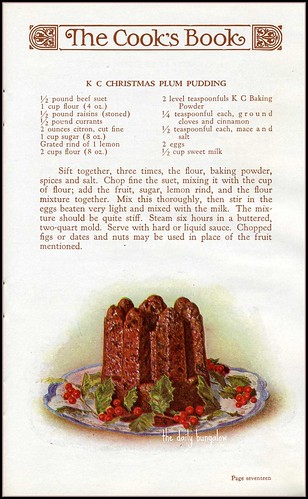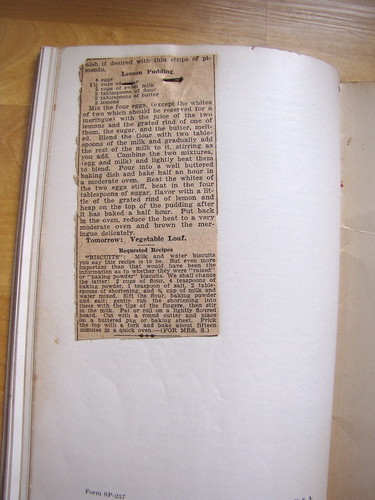“None need go without a Christmas day”: Plum Pudding, Old Style

I’ve never actually had a plum pudding. I know that they aren’t common in the United States, or at least, not in the Pacific Northwest, where I live. Is it that the recipe is old-fashioned, or is it just that it was never popular in this country?
Looking for something Christmasy, I stumbled on a book with the substantial title: Dr. Chase’s Third, Last and Complete Receipt Book and Household Physician, Or Practical Knowledge for the People: From the Life-Long Observations of the Author, embracing the Choicest, Most Valuable and Entirely New Receipts in Every Department of Medicine, Mechanics, and Household Economy; including a Treatise on the Diseases of Women And Children. In Fact, The Book for the Million. With Remarks and Explanations which adapt it to the Every-day Wants of the People, Arranged in Departments and most Copiously Indexed, by A. W. Chase, M. D., the “Memorial Edition” published in 1891, after Dr. Chase’s death.
Dr. Chase includes six different “receipts” (recipes) for plum pudding, and devotes space to many other different puddings, too. A whole chapter in the book is devoted to puddings, including such odd concoctions to our eyes as Pop-Corn Pudding, Salt Pork Pudding, and “Hunter’s Pudding, Boiled—Will Keep for Months.” There is much Resurrected Recipes fodder to be found here, though I imagine we will stay away from the Salt Pork Pudding.
One of the plum pudding recipes is written, charmingly, in verse:
Plum Pudding to Englishmen’s Taste, No. 3, In Rhyme.—
To make plum-pudding to Englishmen’s taste,
So all may be eaten and nothing to waste,
Take of raisins, and currants, and bread-crumbs all round;
Also suet from oxen, and flour a pound,
Of citron well candied, or lemon as good,
With molasses and sugar, eight ounces, I would,
Into this first compound, next must be hasted
A nutmeg well grated, ground ginger well tasted,
With salt to preserve it, of such a teaspoonful;
Then of milk half a pint, and of fresh eggs take six;
Be sure after this that you properly mix.
Next tie up in a bag, just as round as you can,
Put into a capacious and suitable pan,
Then boil for eight hours just as hard as you can.
Here is the recipe that Dr. Chase specifically mentions for Christmas:
Christmas Plum-Pudding, No. 6, Old Style.—Stone 1 1/2 lbs. of raisins, wash, pick and dry 1/2 lb. of currants, mince fine 3/4 lb. of suet, cut into thin slices 1/2 lb. of mixed peel (orange and lemon), and grate fine 3/4 lb. of bread-crumbs. When all these dry ingredients are prepared; mix them well together, then moisten the mixture with 8 eggs, well beaten, and one wine-glass of brandy; stir well, that everything may be thoroughly blended, and press the pudding into a buttered mould; tie it down tightly with a floured cloth, and boil 6 hours. On Christmas day a sprig of holly is usually placed in the middle of the pudding, and about a wine-glass of brandy poured round it, which, at the moment of serving, is lighted, and the pudding thus brought to the table encircled in flames.
Remarks.—With half-a-dozen plum-puddings none need go without a Christmas day, certainly. The only point that seems to me unreasonable is the long boiling, 8, or even 6 hours, which appears to be more than is needed. A circle of three ladies, to whom I referred the matter, gave it as their judgment that 3 hours would be sufficient. Let English people stick to the old custom, but Americans will find that from 3 to 4 hours will cook them perfectly. [See the Paradise Pudding below, which is only to be boiled 2 hours.] A wine-glass, at least, of brandy is almost universally put into the sauce upon Christmas occasions.
I probably won’t make these, as suet is one of those things that I don’t eat. (Maybe we can talk Kristen into it…) I challenge you all to try one of these recipes, and let us know how they turn out.


